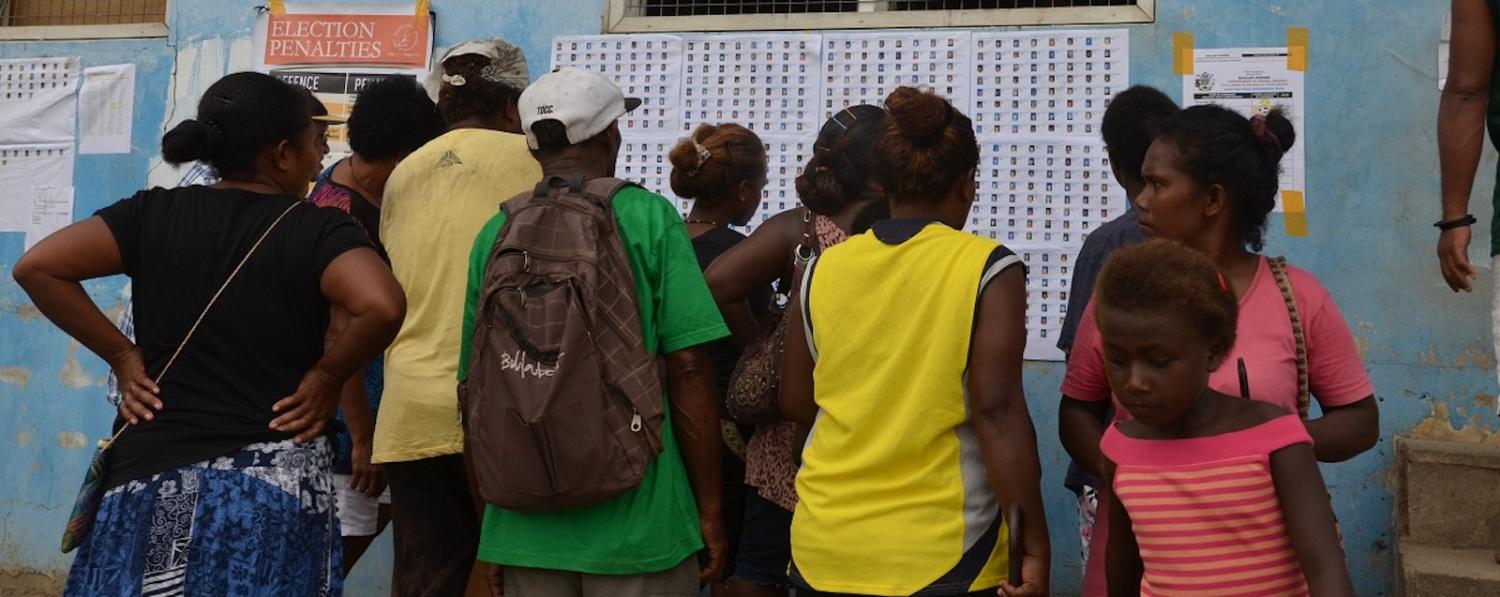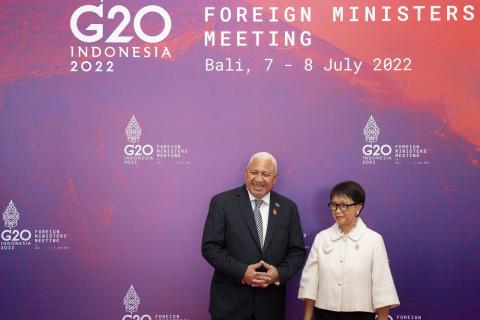In terms of women’s representation in politics, Solomon Islands lags behind much of the world. In April, Solomon Islands will hold the first general election since the departure of the Regional Assistance Mission to Solomon Islands (RAMSI). There is one incumbent female MP. This means Solomon Islands ranks 50 out of 52 Commonwealth countries in terms of women in parliament, beating only neighbours Vanuatu and Papua New Guinea, which both currently have no women MPs at all.
Higher numbers of women contesting does not necessarily correlate to better performance of women candidates.
Only four women have been elected to the Solomon Islands parliament since independence: Hilda Kari (in office 1989-2001), Vika Lusibaea (2012-2014), Freda Tuki (2014-2018), and Lanelle Tanangada (2018-present). Last year marked the first time in Solomon Islands history that two female MPs have served at the same time (albeit briefly). This was from July 2018 when Lanelle Tanangada was sworn-in as a new MP, after her by-election victory in Gizo/Kolambangara, to October 2018 when Freda Tuki lost the seat of Temotu Vatud in a court challenge.
So what can we expect from the 2019 election to be held 3 April in terms of women’s representation?
Number of women candidates
For the upcoming election, there has been a general decline in candidate numbers – from 447 in 2014, to 335 in 2019. in part, this is attributed to a higher nomination fee and Cyclone Oma, which restricted travel around the country during the nomination period. The number of women candidates, however, has remained relatively stable at 25 (compared to 26 in 2014), making up around 7.5% of total candidates.
Higher numbers of women contesting does not necessarily correlate to better performance of women candidates. In the 2014 election, most were relatively uncompetitive, with over 80% of the women candidates winning less than 10% of the vote in their electorates. This holds true for male candidates too – the majority of those who have contested Solomon Islands elections have won less than 10% of the vote.
Rather than focus on candidate numbers, a better predictor of electoral performance may be to look a the characteristics of individual women who have decided to stand and the particular political circumstances of their electorates.
Solomon Islands election outcomes have always been notoriously difficult to predict.
Key electorates to watch
Gizo/Kolambangara: Lanelle Tanangada won a 2018 by-election after her husband Jimson lost the seat in a court challenge. In the 2014 election, Jimson had beaten the incumbent, former prime minister Gordon Darcy Lilo, by 242 votes. In the 2018 by-election, Lanelle Tanangada beat Lilo by almost four times that margin.
The by-election was fiercely contested, and after the voter registration period closed for the 2019 election, over 2000 public objections claiming ineligibility were lodged in the constituency, the highest number in the country (for context, there were around 5,700 registered voters for the 2018 Gizo/Kolambangara by-election).
Temotu Vatud: Freda Tuki won this constituency in 2014, unseating the former foreign affairs minister Clay Forau. The former incumbent then lodged an election petition alleging bribery, treating and undue influence. The case was eventually decided in his favour in October 2018, removing Tuki from parliament.
While Tuki would have been ineligible to contest a by-election, she is eligible to stand in the 2019 general election. The 2014 election outcome was one of the closest in the country, with Tuki winning by just 22 votes. Both Tuki and Forau have nominated in 2019, along with eight other candidates.
An uphill battle
Although the political environment is changing in Solomon Islands, it is not necessarily changing in a way that is more open to women candidates.
Cultural barriers have arguably lessened in many parts of the country. While some leadership positions are still restricted for women, there is a widespread acceptance of the value of women’s participation in politics, as survey results have consistently shown.

Yet other structural barriers have emerged. In particular, the rise of constituency-development funding has in many cases entrenched the position of incumbent MPs. This was evident in the 2014 election when turnover, traditionally around 50%, decreased to under 30%. With far fewer female than male incumbents, this poses a problem for women’s representation.
For those women who are incumbents, they are perhaps in weaker positions than their male counterparts. In the 2014 election and in 2018 we saw cases of female candidates succeeding, in both cases beating senior and powerful political figures. Yet both have faced or are facing serious challenges to their incumbency.
While in many ways this is testament to the general hyper-competitive nature of Solomon Islands politics, there may be an argument that female incumbents are seen as more vulnerable, either to court challenges or defeats at re-election bids. Overall, in the unpredictable electoral environment of Solomon Islands, one enduring certainty is that women face significantly higher barriers to entry into politics than men.

